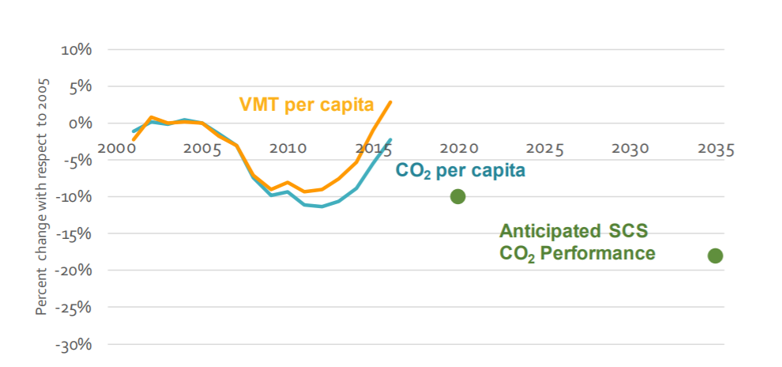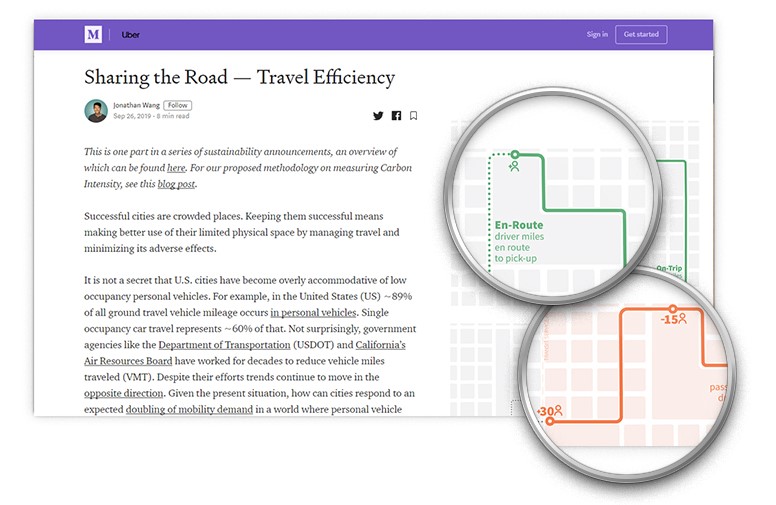A New Travel Efficiency Metric
Seat Utilization: 2 of 3
Traditional measures of transportation network performance do not provide a complete picture of travel efficiency and have contributed to the land use and transportation decisions in the U.S. that have caused substantial reliance on private automobiles with low levels of vehicle occupancy, better described as seat utilization. This reliance is difficult to change even in California, where state goals for GHG reduction have not translated to lower levels of driving or emissions.
Compared to Anticipated Performance of Regional Plans (RTP/SCSs)

California Air Resources Board, November 2018
While congestion is a problem, slow moving cars are more of a symptom of network performance caused by the ‘root’ problems of poor seat utilization and the mispricing of travel. Solutions aimed at the symptom rarely achieve the goal of eliminating congestion, and in the worst case, exacerbate the long-term problem of congestion due to induced travel effects.
A Better way to Measure Travel Efficiency
PMT/VMT measures how efficiently a mode of travel moves people. It can be applied to all passenger vehicle modes and even adapted for freight travel, offering a more comprehensive review of transportation networks. Its connection to carbon intensity (carbon emissions/PMT) offers similar benefits. Adding these metrics to the planning process will offer better insights as to whether land use and transportation network decisions are creating more travel-efficient and climate-sensitive outcomes.
Learn more by contacting one of our industry experts.


